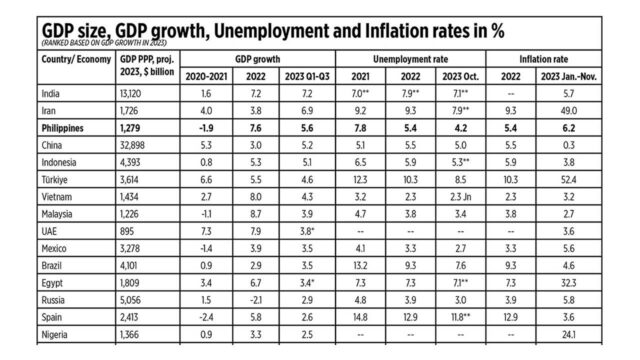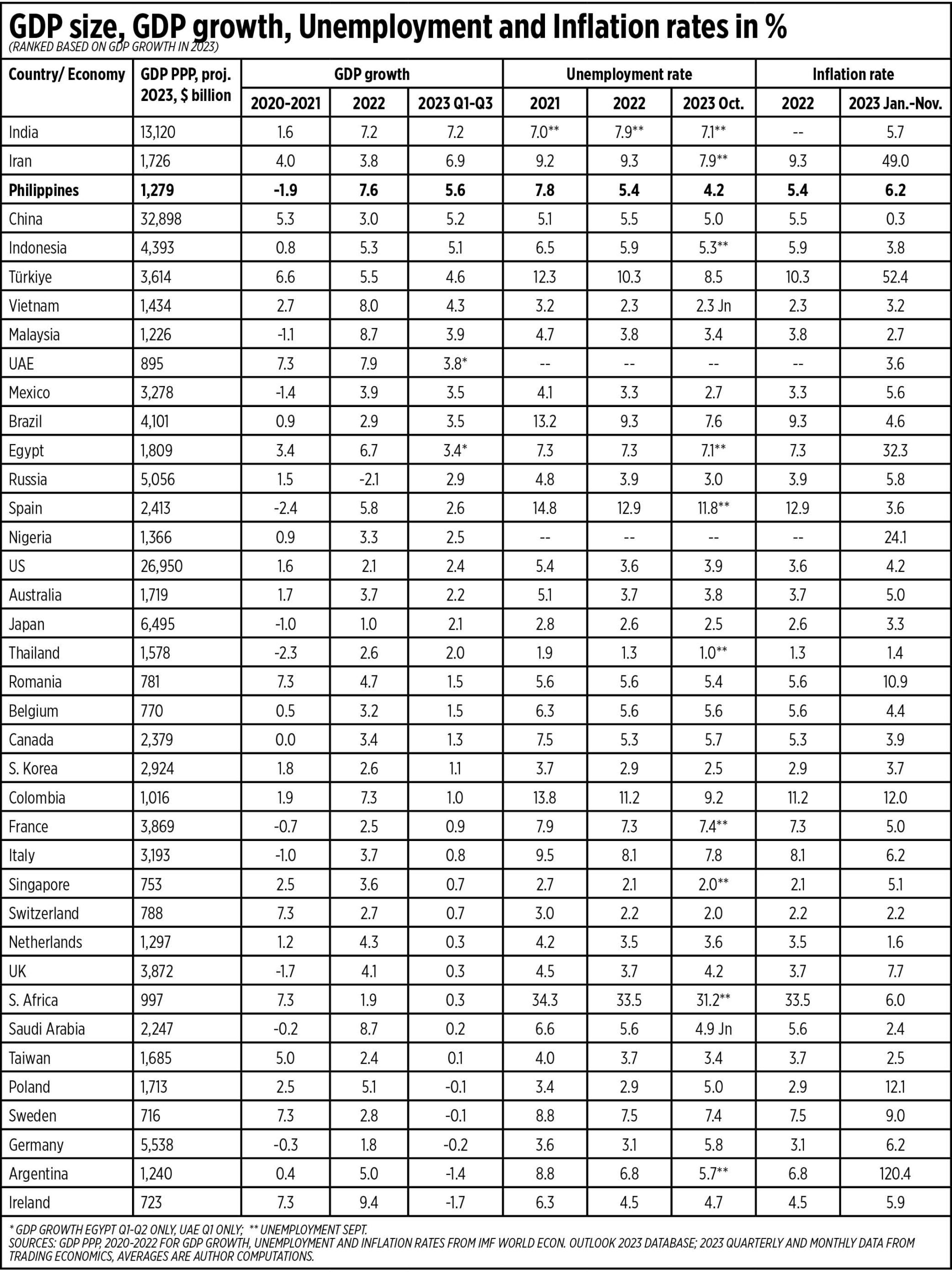Sustainability is no longer a mere buzzword but an indispensable guiding principle steering global practices toward a more ecologically conscious future.
From innovative technologies to community-driven initiatives, the world is witnessing a remarkable surge in sustainable trends that echo a collective commitment to addressing climate change and environmental degradation.
Globally, there is a growing acceptance of the so-called climate fintech that blends technology with the principles of sustainability — paving the way for a steadier stream of funds to help enterprises transition to a greener value chain. For instance, we are seeing these climate fintech firms introduce eco-friendly investment opportunities such as green bonds, responsible investment funds, and financial backing for projects that cut down carbon emissions.
Another major development in global sustainability practices is the acceleration of disclosure preparation regarding the Corporate Sustainability Reporting Directive (CSRD) in the EU and the Securities and Exchange Commission (SEC) in the US. The CSRD has expanded the range of companies that are required to disclose what sustainability measures they have adopted and implemented. It is said that thousands of additional companies in Europe are now being obliged to disclose detailed information on how their operations affect the environment, social matters, and how they manage related risks and opportunities, thus influencing them to rethink their sustainable strategies. On the other hand, the US SEC had advanced proposals on rules on climate-related disclosures that are expected to increase accountability and encourage more sustainable business practices. These regulations signal a paradigm shift where sustainability reporting moves from being a voluntary, often inconsistent effort, to a standardized and enforceable requirement.
Another global trend is the application of artificial intelligence (AI) for sustainability, which sustainability specialists project will be further amplified in 2024. Because of AI’s potential to optimize resource use, and improve energy efficiency, the call for its use in sustainability practices has expanded with the belief that it can contribute to significant reductions in environmental impact. For one, AI’s predictive capabilities are now being utilized in biodiversity conservation, where machine learning models help in predicting poaching threats and management of protected areas. It is also believed that AI can help analyze big data for environmental science, thereby enhancing our understanding of ecological systems and the impacts of climate change.
As it stands, AI will be most useful in significantly simplifying the processes involved in ESG data management, especially in the light of mandatory sustainability disclosures.
As business faces the daunting task of managing, collecting, and analyzing huge volumes of ESG data, AI-powered ESG data management software can support efforts to streamline the mapping process which can in turn ensure accuracy, efficiency, and compliance.
In the Philippines, there are also observable trends that we expect for 2024 and the years ahead. As a fitting year ender, I am focusing on select major sustainability trends that are expected to confront Philippine companies next year and in the future.
1. Circular Economy: Redefining Progress. At the forefront of sustainability trends in 2024 is the ascent of the circular economy, a departure from the linear “take-make-dispose” model. This revolutionary shift emphasizes resource efficiency and waste reduction, urging businesses and industries to adopt closed-loop systems. These systems are designed to facilitate easy disassembly, repair, and recycling, fostering not only environmental stewardship but also innovation in product design and manufacturing processes.
In the Philippines, a growing momentum toward circular economy principles is evident, especially in industries like textiles, electronics, and packaging. Collaborative initiatives involving government bodies, businesses, and non-governmental organizations (NGOs) are propelling the adoption of circular practices, aligning with the nation’s commitment to sustainable development and responsible resource management.
2. Renewable Energy: Powering Sustainable Progress. The global transition away from fossil fuels will be a defining theme in 2024, with the adoption of renewable energy sources taking center stage. Solar, wind, hydro, and geothermal energy are increasingly becoming mainstream, providing cleaner alternatives to conventional power generation methods. Endowed with abundant natural resources, the Philippines is strategically positioned to harness these energies for sustainable development.
Across the archipelagic expanse of the Philippines, solar farms, wind turbines, and geothermal power plants are becoming ubiquitous, contributing to the reduction of greenhouse gas emissions, and fostering energy independence. The government’s active promotion of clean energy aligns with the country’s commitment to mitigating climate change impacts.
3. Tech-Driven Sustainability Solutions: Nurturing Innovation. In 2024, technology will emerge as a linchpin in driving sustainability initiatives. AI, data analytics, and the Internet of Things (IoT) will be instrumental in optimizing resource use, enhancing energy efficiency, and monitoring environmental impacts. Smart cities and sustainable urban planning are emerging as innovative solutions to address the challenges posed by rapid urbanization.
Cities like Makati, Taguig, Manila, Pasig, Cebu, and Davao are at the forefront of adopting smart technologies to improve public services, reduce energy consumption, and enhance overall quality of life. From intelligent transportation systems to waste management solutions, technology is playing a pivotal role in transforming Filipino communities into sustainable and resilient hubs.
4. Regenerative Agriculture Practices: Cultivating Sustainability. Acknowledging agriculture’s significant role in environmental degradation, regenerative agriculture practices will be gaining prominence in 2024. Farmers and agricultural businesses are embracing techniques like agroforestry, cover cropping, and rotational grazing to restore soil health, sequester carbon, and promote biodiversity.
In the Philippines, where agriculture is a cornerstone of the economy, a growing interest in regenerative practices is observable. Both small-scale farmers and large agribusinesses are exploring methods that prioritize soil health and environmental conservation. This shift ensures not only long-term food security but also contributes to the country’s overall ecological equilibrium.
5. Green Building and Sustainable Infrastructure: Constructing Tomorrow. The construction industry will undergo a paradigm shift toward sustainability in 2024. Green building practices, incorporating eco-friendly materials, energy-efficient design, and waste reduction, are becoming the norm in new construction projects. Sustainable infrastructure development aims to minimize the environmental impact of buildings, roads, and other structures.
In the Philippines, sustainable building practices are gaining prominence, particularly in urban areas undergoing rapid development. Green architecture, adherence to energy-efficient building codes, and integration of renewable energy sources into construction projects are becoming increasingly prevalent. This trend not only addresses the immediate environmental impact of construction but also ensures the long-term resilience of infrastructure in the face of climate change.
6. Plastic Alternatives and Zero-Waste Initiatives: Breaking Free from Plastic. The global plastic pollution crisis has intensified the search for alternatives to single-use plastics and will spur the promotion of zero-waste initiatives in 2024. Individuals, businesses, and governments are actively seeking sustainable alternatives and innovative solutions to curtail plastic consumption and waste.
In the Philippines, a country grappling with the challenges of plastic pollution, a movement towards zero-waste living and the adoption of plastic alternatives is gaining momentum. Local businesses are exploring packaging options that are biodegradable or easily recyclable, and community-driven initiatives are raising awareness about the environmental impact of plastic. Government policies regulating single-use plastics and promoting responsible waste management practices further contribute to this sustainable shift.
7. Biodiversity Conservation and Ecotourism: Preserving Nature’s Beauty. Preserving biodiversity and promoting sustainable tourism are crucial components of the sustainability agenda in 2024. Ecosystems globally face threats from climate change, deforestation, and pollution, prompting efforts to protect and restore natural habitats. Simultaneously, the tourism industry is evolving to prioritize responsible and eco-friendly practices.
In the Philippines, renowned for its rich biodiversity and stunning landscapes, there is a growing focus on biodiversity conservation and ecotourism. The establishment of protected areas, marine reserves, and wildlife sanctuaries aims to safeguard the country’s unique flora and fauna. Sustainable tourism initiatives seek to strike a balance between economic development and environmental preservation, ensuring that future generations can revel in the beauty of the archipelago.
As the world grapples with the challenges of climate change and resource depletion, the adoption of sustainable practices emerges not only as an option but a necessity in 2024. The trends highlighted in this article demonstrate a collective global commitment to creating a more environmentally conscious and resilient future.
In the Philippines, these trends intersect with the nation’s unique socio-economic and environmental context, weaving a narrative of progress that balances economic growth with environmental responsibility.
By embracing circular economy principles, transitioning to renewable energy sources, leveraging technology for environmental solutions, promoting regenerative agriculture, adopting green building practices, reducing plastic usage, and prioritizing biodiversity conservation, the global community, including the Philippines, is laying the foundation for a sustainable and harmonious future. This collective effort, rooted in innovation and responsibility, paints a hopeful picture of a world where sustainability is not just a trend but an integral part of our shared legacy.
Ron F. Jabal, DBA, APR, is the chairman and CEO of the PAGEONE Group (www.pageonegroup.ph) and founder of Advocacy Partners Asia (www.advocacy.ph).
ron.jabal@pageone.ph
rfjabal@gmail.com













